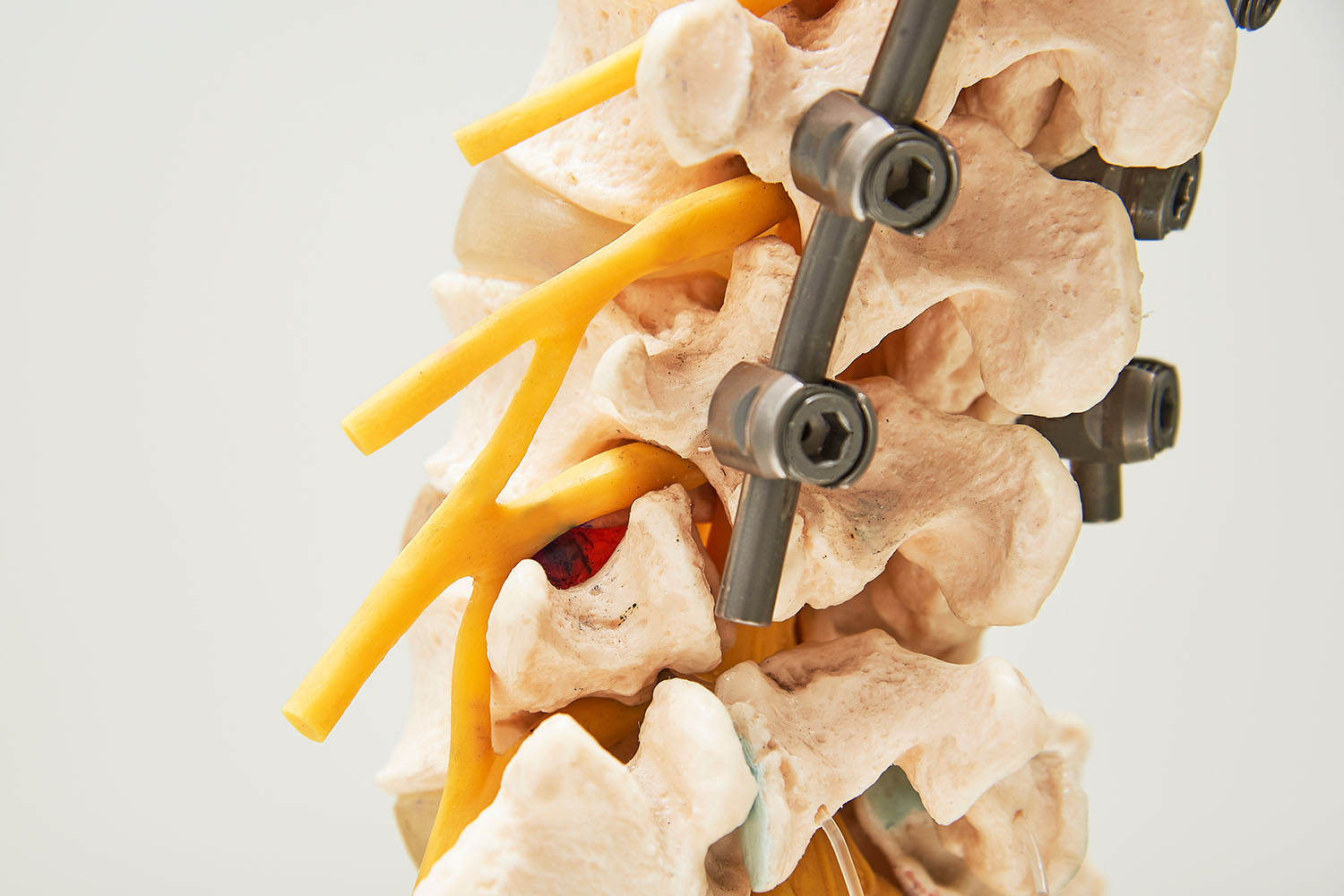Overview
Transforaminal Lumbar Interbody Fusion (TLIF) surgery is a widely recognized procedure aimed at treating various spinal conditions, particularly those involving the lower back. This surgical technique has garnered attention for its effectiveness in alleviating pain and improving patients’ quality of life. In this blog, we’ll delve into the details of TLIF surgery, supported by facts and international research.
What is TLIF Surgery?
TLIF surgery is a type of spinal fusion procedure that involves removing a damaged intervertebral disc and stabilizing the spine by fusing the adjacent vertebrae. The surgery is performed through a small incision made in the patient’s back, allowing the surgeon to access the spine from the side (transforaminal approach). This method minimizes disruption to the muscles and tissues surrounding the spine, promoting a quicker recovery compared to traditional open spinal surgeries.
Indications for TLIF Surgery
TLIF surgery is typically recommended for patients suffering from:
- Degenerative Disc Disease: When the intervertebral discs lose their cushioning ability, leading to pain and discomfort.
- Spondylolisthesis: A condition where one vertebra slips over the one below it, causing spinal instability and pain.
- Spinal Stenosis: Narrowing of the spinal canal that puts pressure on the spinal cord and nerves, resulting in pain, numbness, or weakness.
- Herniated Discs: Discs that have ruptured or bulged out, compressing nearby nerves and causing pain.
The TLIF Surgery Procedure
The TLIF surgery procedure involves several key steps:
- Incision and Access: A small incision is made on one side of the lower back, and the muscles are gently moved aside to access the spine.
- Removal of Damaged Disc: The damaged intervertebral disc is removed, creating space for the bone graft.
- Insertion of Bone Graft: A bone graft is placed in the space where the disc was removed, promoting the fusion of the adjacent vertebrae.
- Placement of Implants: Screws and rods are inserted to stabilize the spine and facilitate the fusion process.
- Closure: The incision is closed, and the patient is taken to the recovery room.
International Research on TLIF Surgery
Numerous studies have been conducted globally to evaluate the effectiveness and safety of TLIF surgery. Here are some key findings:
- Efficacy and Pain Relief: Research published in the Journal of Neurosurgery: Spine found that TLIF surgery significantly reduces lower back pain and improves functional outcomes in patients with degenerative disc disease and spondylolisthesis .
- Minimally Invasive Approach: A study in Spine Journal highlighted that the minimally invasive TLIF approach results in shorter hospital stays, reduced blood loss, and quicker recovery times compared to traditional open surgeries .
- Long-Term Outcomes: A comprehensive review in the Global Spine Journal concluded that TLIF surgery provides durable long-term relief from pain and improves spinal stability, with fusion rates exceeding 90% .
- Complication Rates: Research from the European Spine Journal indicated that TLIF surgery has a lower complication rate compared to other fusion techniques, particularly when performed using a minimally invasive approach .
Benefits of TLIF Surgery
TLIF surgery offers several benefits, making it a preferred choice for many patients and surgeons:
- Minimally Invasive: The transforaminal approach reduces muscle damage, leading to faster recovery and less postoperative pain.
- High Success Rates: Studies show high fusion rates and significant pain relief following TLIF surgery.
- Improved Stability: The procedure effectively stabilizes the spine, reducing the risk of future spinal issues.
- Shorter Hospital Stay: Patients typically experience shorter hospital stays and quicker return to daily activities.
TLIF surgery has emerged as a highly effective and minimally invasive option for treating various spinal conditions. Supported by extensive international research, this procedure offers significant pain relief, improved spinal stability, and faster recovery times for patients. If you’re considering spinal surgery, TLIF surgery may be a viable option to discuss with your healthcare provider.



